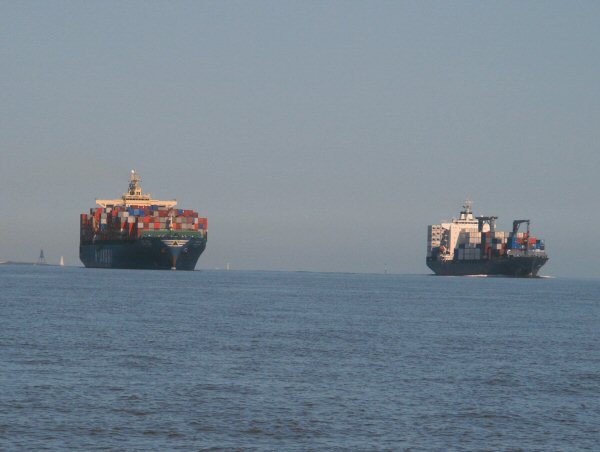
The Elbe Estuary
The Elbe estuary has something of a reputation. It is the only part of the trip to the Baltic that cannot be easily avoided and needs a bit of thought in a small boat. The tides are significant, and against even moderate winds, the seas can be bumpy.
Cuxhaven is a sensible, and rewarding place to stop. The distance from Norderney to Cuxhaven is about 63 miles, so it is easily possible to do the journey in daylight, and the great advantage is that you do not have to cross the shipping lanes. The Elbe is the entrance for the major port of Hamburg, and in foggy conditions, is no place to be.
One variation is to sail out to Helgoland and then back to Cuxhaven. Helgoland is a free trade area and is extremely popular with German yachts buying (even cheaper) booze. The legs are slightly shorter, but it does mean crossing the lanes.
Charts
The BA series on the Elbe are excellent. The key charts you will need are 3761 (Borkum to Helgoland) and 3261 (Scharnhorn Riff to Medemgrund). You don't really need a chart past Cuxhaven, although 3265 covers the area.
Vlieland
Because of the surrounding sandbanks, it is necessary to go out almost to the Elbe light vessel (actually to Scharnhörnriff-W buoy) and then follow the relatively narrow, but extremely well buoyed channel all the way in to Cuxhaven, a distance of about 17 miles. From the light float to Cuxhaven the channel is divided into four lanes. The inner two are for major ships and are marked with normal buoys. The outer two are bounded by very large beacons (posts), painted respectively green or red. You can travel in either direction in these outer lanes, but they are relatively narrow - only a few hundred yards at some points, and the channel shallows rapidly beyond the posts, particularly on the south side..
The major issue is that the tide, particularly across Sharnhörn Riff, runs at up to 4 knots on the ebb, and with prevailing winds being south-westerly, anything much above a F4 tends to whip up sizeable seas. We've been out there in an F6 and, although I didn't consider it dangerous, I wouldn't want to be there in a smaller boat.
Tidal planning generally means leaving Norderney about two hours after low water. You do have to cross the entrance to the Jade and Wesser, which can be busy, but not a patch on the Elbe, where large ships overtake other large ships. There is an anchorage at the Jade entrance and this can add to the confusion.
Beyond Cuxhaven, the estuary is (slightly) more sheltered, and you must make the sixteen miles or so up river to the canal at Bunsbüttel. The main hazard here is getting across the lanes, as the canal entrance is on the north bank. Sometimes it can feel very much like trying to run across the M25!
Cuxhaven
We like cuxhaven. You need to get beyond the shops near the marina and into the town itself, but it has a character that many other towns lack. Its both a holiday area (next to the marina is a caravan park - people set up their motor homes in what looks like Dover's ferry car park!) and also a major ferry port. The major business is Helgoland day trips. You must watch out for the high speed catamarans which leave the harbour at a rate of knots.
The marina is large and well run. The Marina Restaurant is very good (the breakfasts are superb!) and shops are nearby. There is a chandlers over in the port area, and a bookshop on the way to the town sells charts and pilots.
On one of our visits, there was a traveling fair at the rear of the town. Its very strange for UK visitors to see alcohol being sold on fairground stalls, but the sausages are excellent!
On our last trip we arrived late at night on a German Bank holiday, and the marina was packed. There is a long pontoon to Starboard on entering where yachts can raft up, and we ended up about six deep. Many Hamburg yachts make a bank holiday trip to Helgoland, and Cuxhaven is a layover stop.
Returning to the UK
The trip back to the UK has the added disadvantage that it is against the prevailing winds. Its not uncommon to wait up to a week in Cuxhaven for the right conditions, and many people have left in marginal conditions only to be caught out.
As stated above, the tides are considerable, even past Cuxhaven, and the best time to leave is about high water. This should get you out of the main streams with one tide - but you do need either light winds, or winds from the East or North East.
